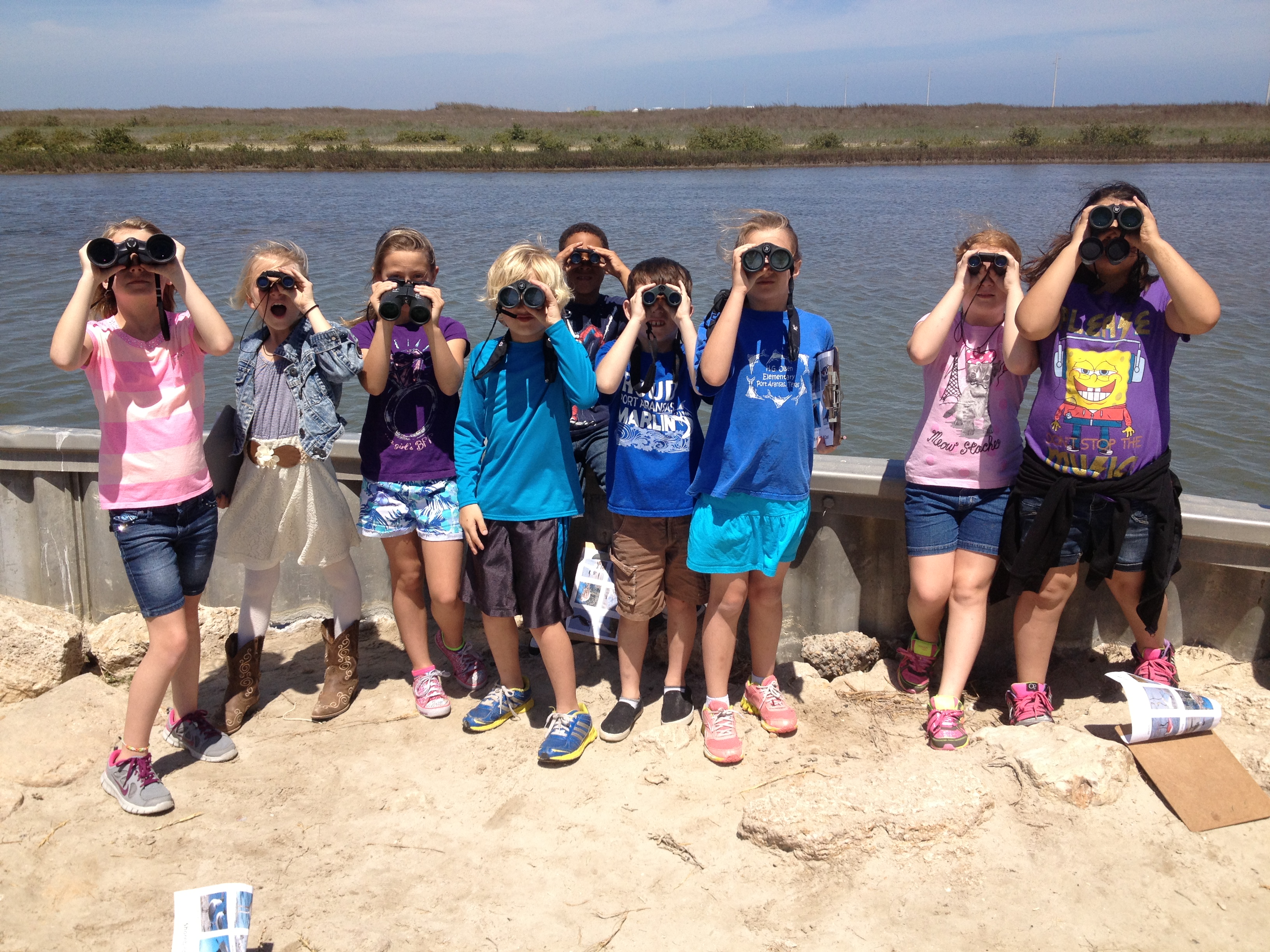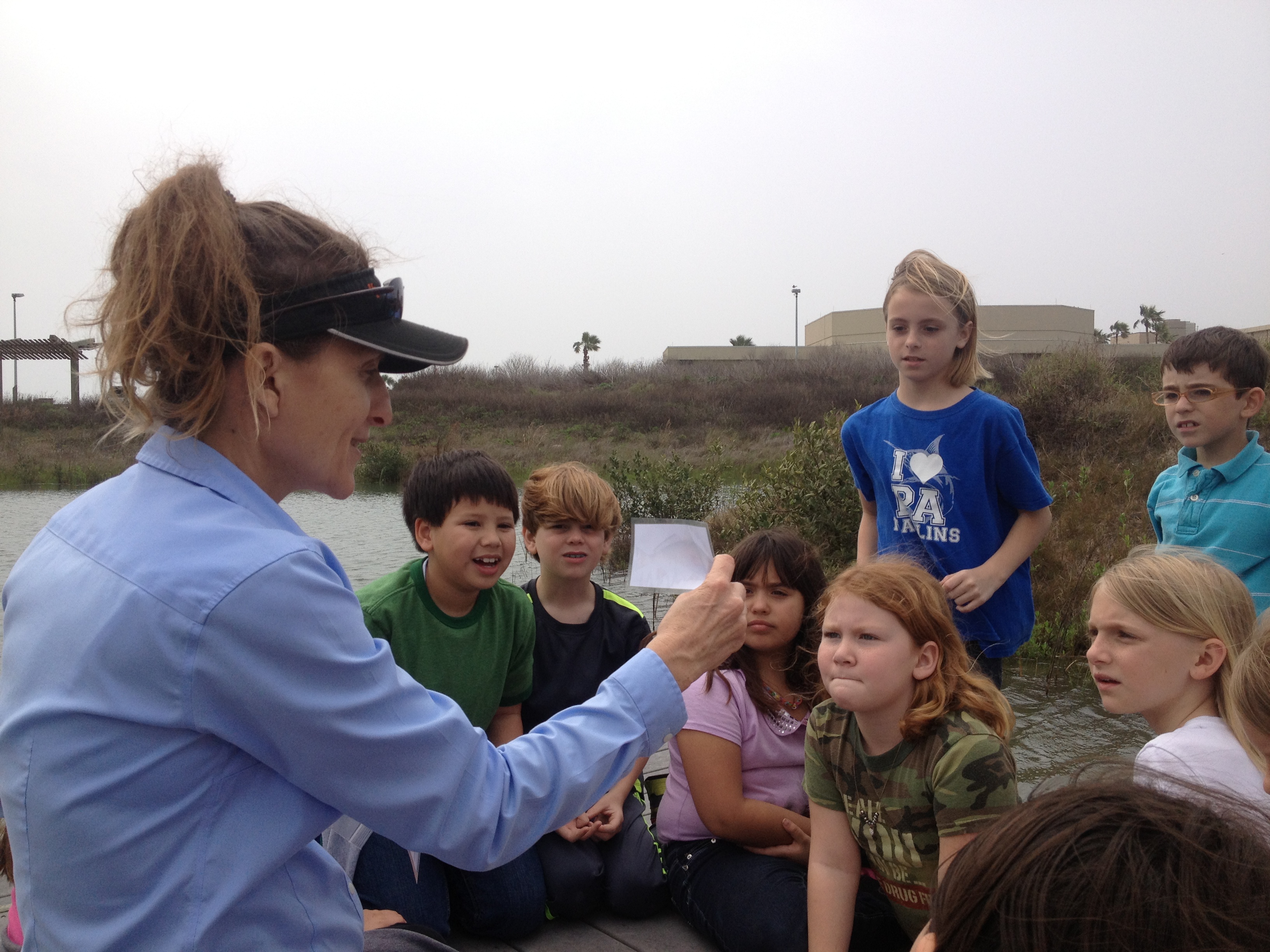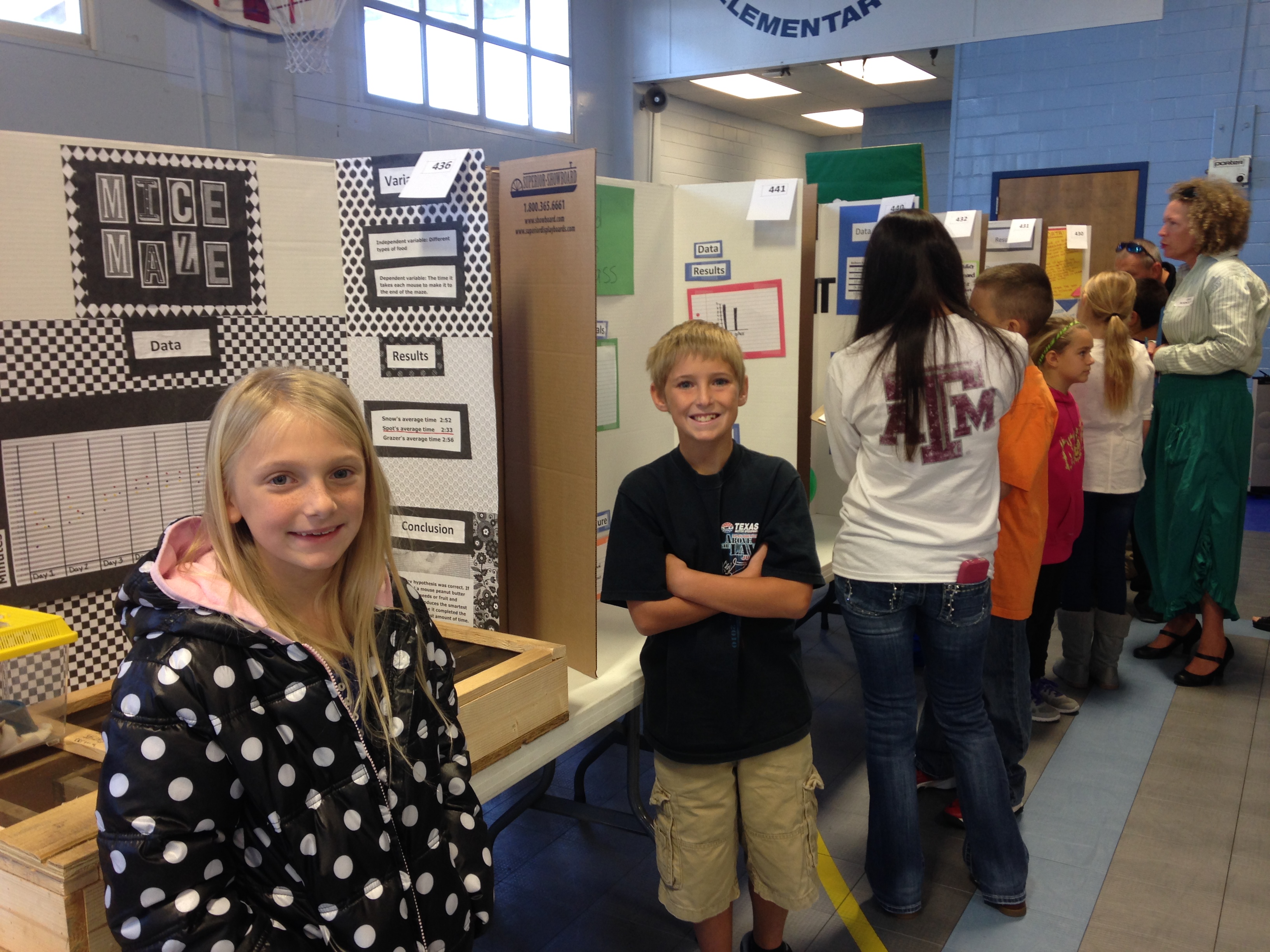Graduate Fellow Profiles
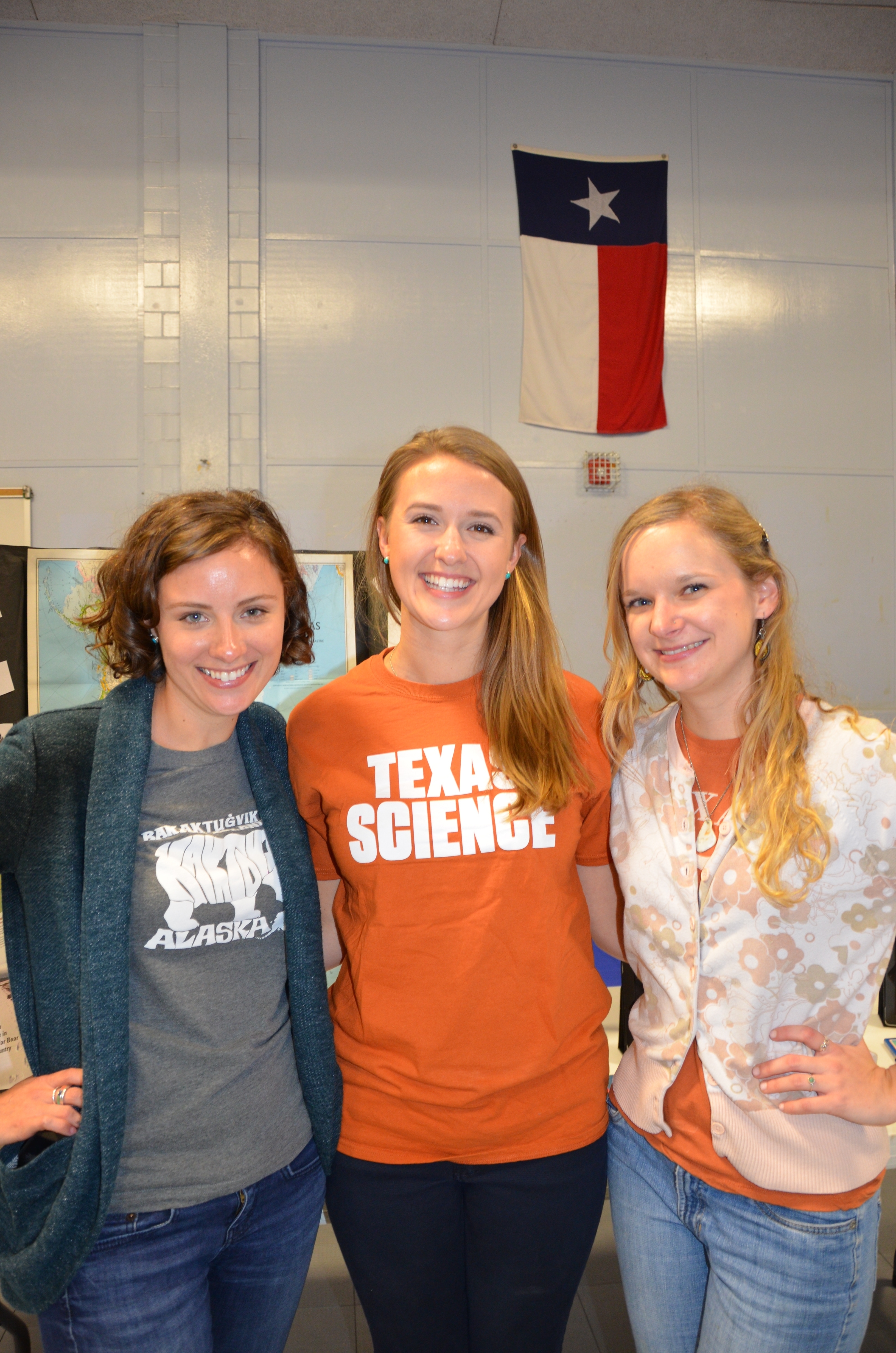
Former Scientist in Residence Fellows
- 2021 - 2021 Briana Martinez, M.S. Student
- 2020-2021 Kyle Capistrant-Fossa, Ph.D. Student / Victoria Congdon, Ph.D. Student / Berit Batterton M.S. Student
- 2019-2020 Emily Bristol, M.S. Student / Sarah Douglas, Ph.D. Student / Leighann Martin, M.S. Student
- 2018-2019 Angelina Dicheira, Ph.D. student / Leighann Martin, M.S. Student
- 2011-2012 Aubrey Lashaway, M.S.
- 2012-2013 Catalina Cuellar Gempler, Ph.D.
- 2013-2014 Gene Oh, M.S / Stephanie Smith, M.S.
- 2014-2015 Carrie Harris, M.S. / Meredith Evans, M.S.
- 2015-2016 Craig Connolly, Ph.D. student
- 2016-2017 Meaghan Cuddy, M.S. student / Angelina Dicheira, M.S. student
fellow testimonials
Meaghan Cuddy
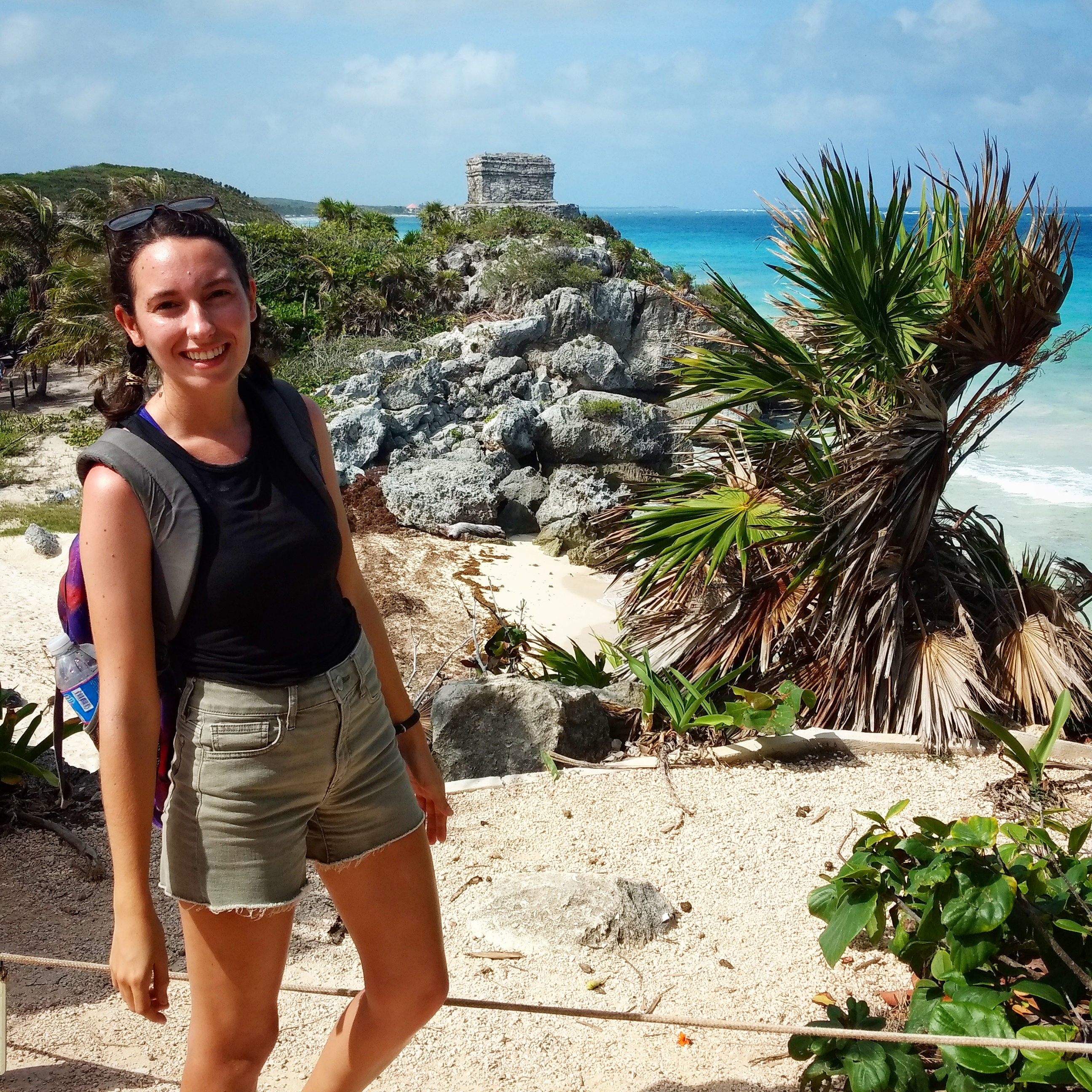
This year, I will be working with Olsen Elementary School fourth and fifth grade classes. A major priority for me is increasing scientific literacy and public understanding of research – there is nothing better than watching someone get excited about all of the awesome work we do as marine scientists! By spending time in the classroom with my students each week, I hope to encourage them to care about science and the important role it plays in their lives (and maybe even inspire a few future marine scientists!).
In the fall, my classes and I will be focused on our preparations for the upcoming annual science fair. This will involve familiarizing students with the scientific method, scientific questions and hypotheses. We will also be learning how to interpret, report and communicate results by performing experiments and laboratory activities. Students will present their original research projects to their peers, friends, families, and the local community at the science fair on November 10!
RESIDENT: FALL 2016 & SPRING 2017
Angelina Dichiera
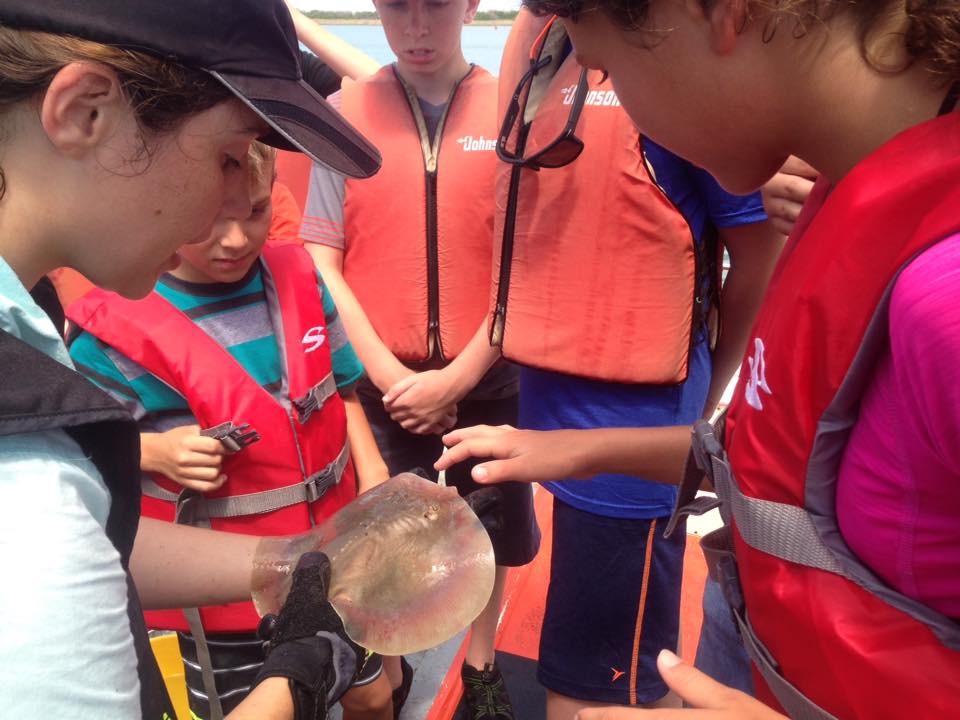
I am a second year Master’s student at UTMSI, studying fish respiration. Participating in the Scientist in Residence program this year has been wonderful thus far, being able to bring my love of marine science to the students. Previously I’ve taught elementary and middle school students in a field trip setting, leading environmental education programs at my undergraduate school. It was always great to get young students outside, and inspiring to see so many of them engaged and interested in what’s happening in their backyards! I am lucky enough to be serving as the resident for the 8th grade class this year, which will be continuing the SiR long-term environmental monitoring conducted the past few years, bringing the students outside to collect data around Port Aransas. My goal for them is to help broaden their appreciation for science while learning the skills necessary for it, with this hands-on marine science monitoring. At the end of the year the students will not only know how to use technical equipment to measure parameters such as salinity and pH, but will have synthesized the data they have collected to answer their own research questions. This culminates in the 8th graders talking to the UTMSI community about their research at the April poster session! I am very excited to be able to lead the 8th grade class in and out of the classroom during this year’s monitoring project through SiR. Stay tuned for updates!
RESIDENT: FALL 2016 & SPRING 2017
Craig Connolly
RESIDENT: FALL 2015 & SPRING 2016
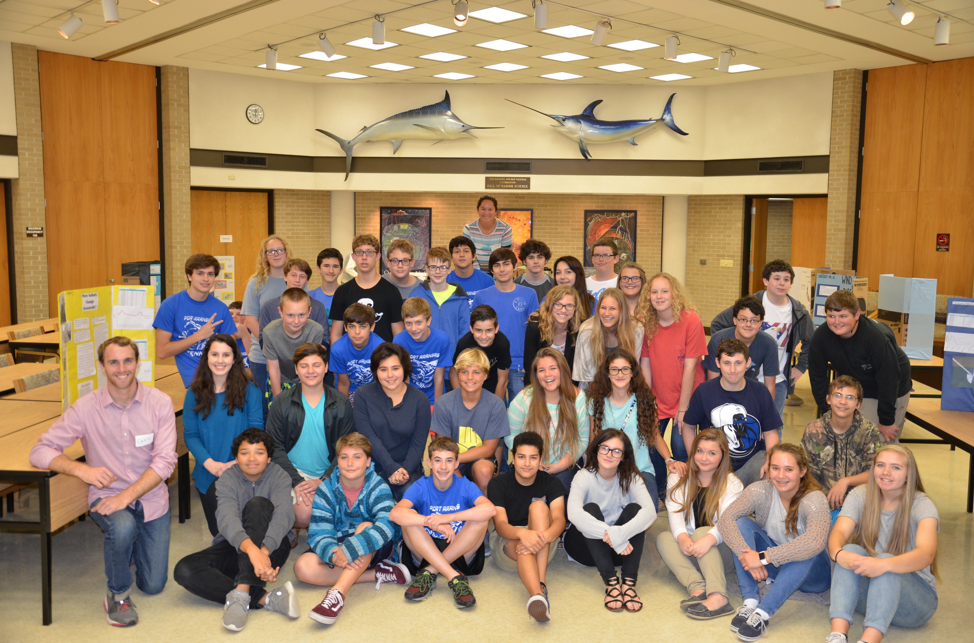
I have always enjoyed informally talking to students about science. In the past, most of my interactions were with undergraduates to discuss my research in the Arctic. As an undergraduate myself, I also judged and mentored high school science fair projects. I find it very rewarding to share my enthusiasm for the environment to students of all ages and backgrounds, but I also believe that all scientists should be able to communicate science to the public effectively. This is an especially important skill that I am always trying to improve on. For these reasons, I saw the SiR Program at UTMSI as a great fit for me. I’m a SiR fellow for the 2015 school year and I teach the 4th and 5th grade classes at the Olsen Elementary School and the 8th grade classes at the Brundrett Middle School in Port Aransas. The SiR Program gives me an opportunity to step into a new classroom each week and transform from a graduate student into a teacher. Every class I strive to link science topics with hands-on activities. I urge my students to think critically and ask good questions that stimulate class-led discussions. The SiR Program is a truly unique opportunity that allows me to collaborate with teachers and develop a relationship with every student inside the classroom.
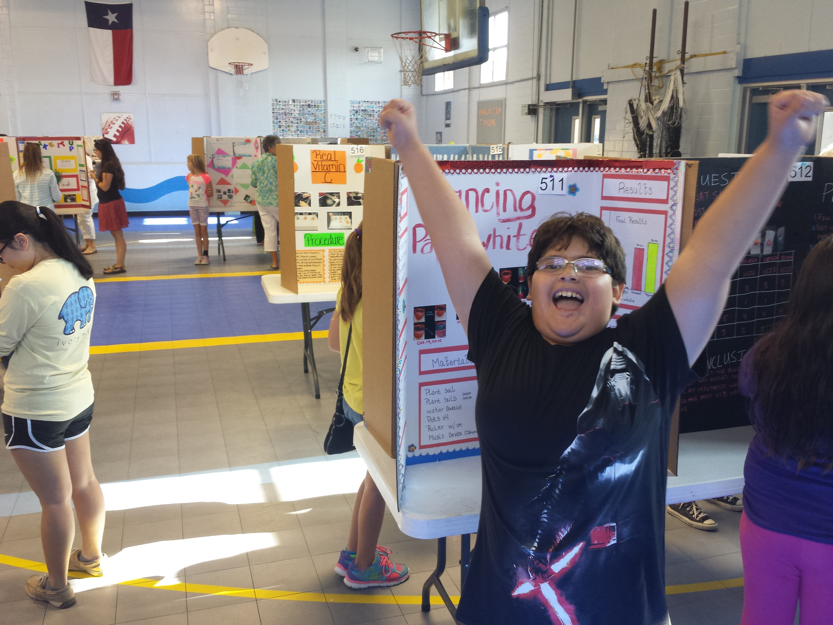
One of the highlights of the SiR Program is the Port Aransas 4th and 5th grade Science Fair that occurs every fall. Right from the beginning, I found myself leading lessons about the scientific method to help prepare students for the Science Fair. The Science Fair is an excellent opportunity for the 4th and 5th graders to express their creativity in the form a scientific experiment and show off what they have learned about formulating a scientific question, hypothesis, results, and conclusions. Scientists from UTMSI as well as members of the community also judge the students, which is an excellent opportunity for them to practice communicating about their science experiments. All of the Science Fair projects were outstanding this year, with projects across a wide range of topics including experiments that test whether your pet iguana is right-footed or left-footed and a study examining how temperature affects a snail’s ability to find food. It was a very proud moment to not only see all of the hard work that my students put into their projects, but just how excited they were to share them with judges from the community and scientists.
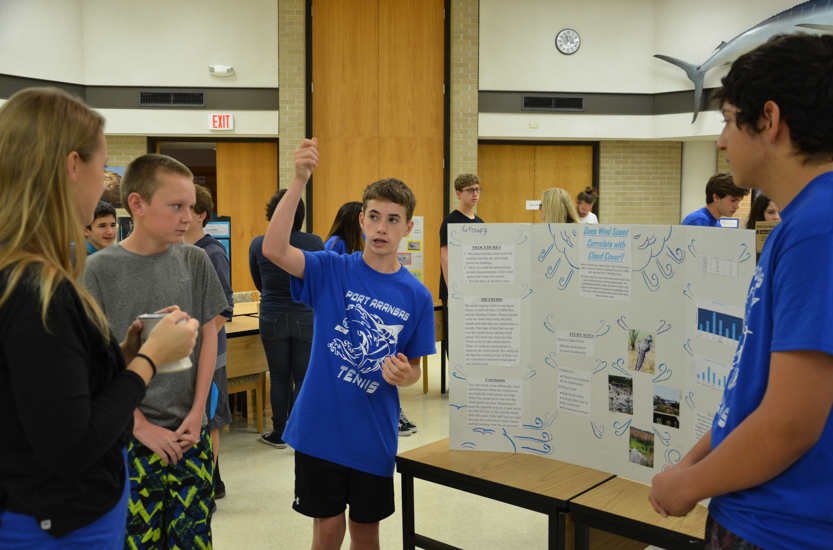
With my 8th grade classes, I am leading an environmental monitoring program that allows these students to collect monthly water data such as salinity, temperature, nutrients, and light depth at several sites around Port Aransas. The goal of this program is give the students the ability to take control of the data they collect and analyze it as a group. This year we have been going to a marsh ecosystem at the Birding Center, a beach ecosystem near the Horace Caldwell Pier, and the open water ecosystem at the Port Aransas Ship Channel. Through this activity, I encourage students to make linkages between the data we collect and the ecosystem processes and patterns that may differ between sites. Very often, I ask my students the question “so what does this mean, and what can we learn from this?” as a way of generating discussion about how the ecosystem is functioning that day or over the course of the year. For instance, they have been investigating research questions such as "How does nutrient loading vary between the beach, ship channel and birding center?" or "How does cloud cover relate to turbidity?" I also encourage students to ask scientific questions that truly interest them and encourage them to take an active role in the data they wish to collect. These efforts will be capped off with a research symposium, where students will be holding a poster session to display their results and bring together everything that they have learned throughout the academic year. Much like the Olsen Elementary School Science Fair, the 8th graders will have the opportunity to interact with scientists from UTMSI and discuss their research in a format similar to that of a scientific conference.
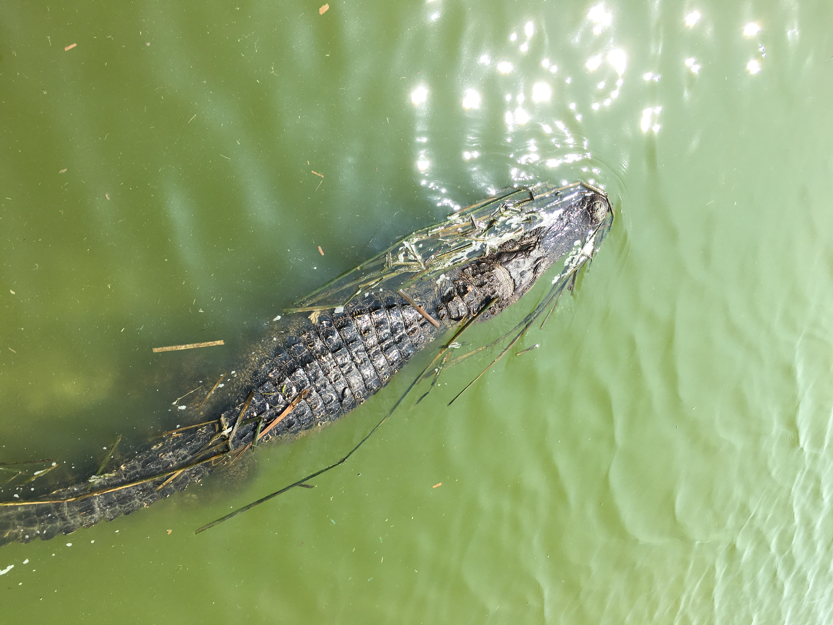
As a teacher for both kids and undergraduates, I have found that one of the biggest hurdles of teaching is being able explain science not only in a way that is easy to understand, but that is exciting and simple. To help my students learn more effectively, I always try to keep the acronym “KISS” in mind, which stands for “Keep It Simple Silly”. Teaching with the SiR Program has helped me to realize that the very best way to communicate science, whether I am talking to my peers, my students, or my parents, is to keep it simple, easy to understand, and convey the main points with enthusiasm. Overall, the SiR program has helped me to become a better teacher, but has also taught me some very important tools to convey my research more effectively as a graduate student.
Meredith Evans
Resident: Fall 2014 & Spring 2015

I first heard about the UTMSI Scientist in Residence program as a prospective student in 2009. I always knew that I wanted to use my Master’s and PhD for outreach and education, so naturally, I asked a current graduate student about opportunities at UTMSI. Considering UTMSI is a satellite campus, I assumed teaching assistantship opportunities would be slim - I was elated when they told me about the Scientist In Residence program with Port Aransas ISD. My job as a scientist in residence fellow started in August 2014 and will continue through May 2015. I serve as the resident for 4th and 8th grade, visiting each of my 5 classes once per week.
With my 4th graders, one of the most rewarding experiences so far has been mentoring the students for their science fair. This fair includes both 4th and 5th grade students, so needless to say the less experienced 4th graders were nervous for the event. From August – November we learned about the scientific method, did our own in class experiment, brainstormed about good projects and even did some peer critique before the big event. By the time the science fair rolled around, I was amazed that all my students felt so confident and prepared – even the students who said they ‘weren’t doing the science fair’ from the very beginning. I loved that this event sparked so much curiosity and made every student feel confident in his or her skills as a scientist.
Following the science fair, we have been working on making weekly scientific observations in their very own science notebooks, as well as executing experiments that help them understand what their already learning in class. (You can see some pictures from these observations and experimenting with water density below.) It’s rewarding to visit them every week and see their enthusiasm and excitement for science! 

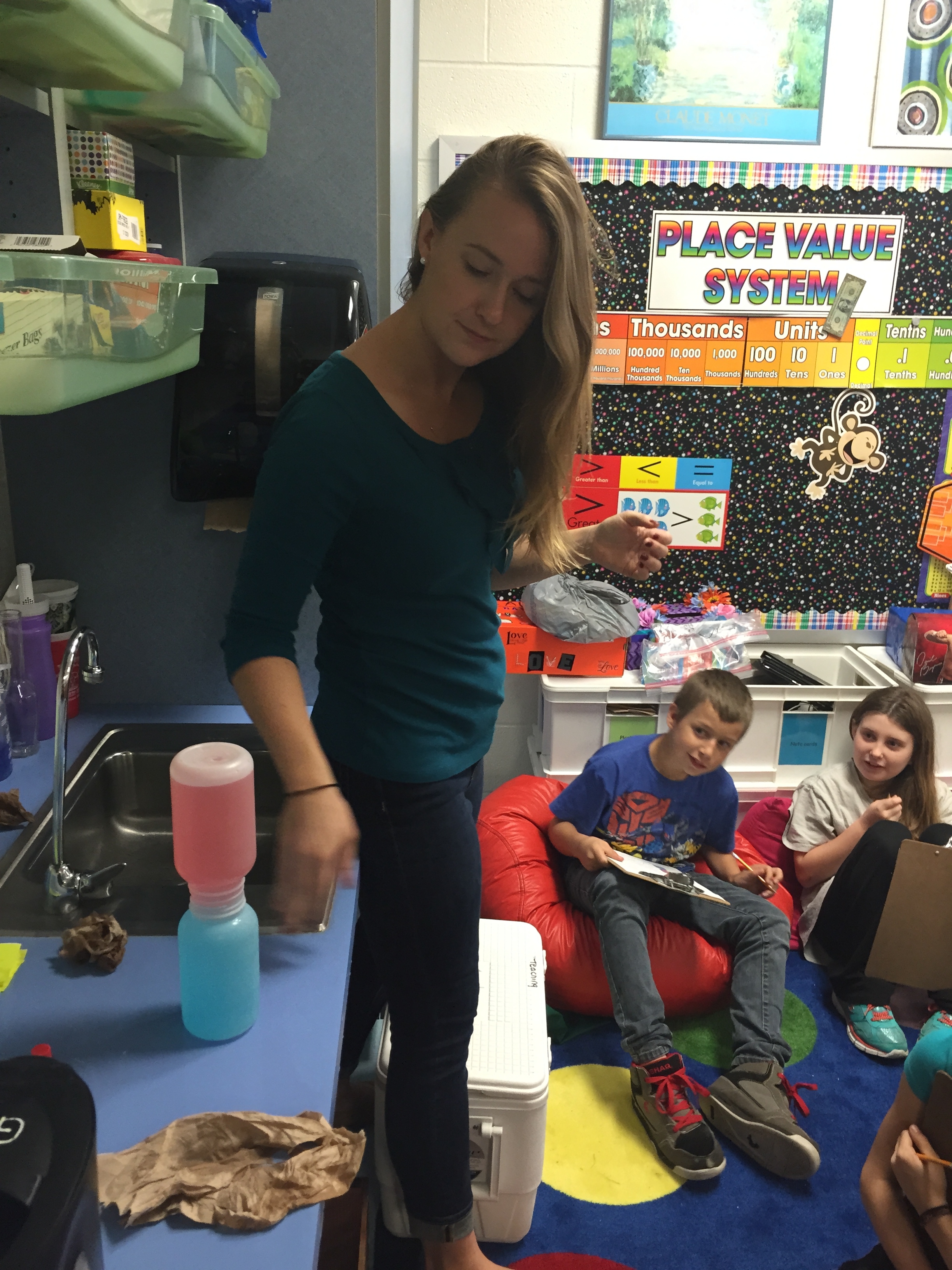
Luckily for me, my 8th graders are equally rewarding. This year, I have created a long-term sampling program that allows each of my classes to collect data at locations across Port Aransas. To do this, students have learned how to use technical equipment from UTMSI – much of which I didn’t see until graduate school! Together, we’ve collected months of measurements including salinity, pH, dissolved oxygen, turbidity, nitrate concentration, phosphate concentration and so much more. This data will be utilized to complete their end of the year project – a poster presentation session at UTMSI (see events page). Working in groups, students will create a scientific poster based on their own research question and present it to faculty and students and UTMSI. These questions are inquiry based, but can easily be analyzed using the data we’ve all collected as a group. Through the completion of this project, students will develop valuable research, excel, statistics and presentation skills. 

Although this is hard work for the students, I think they enjoy the weekly change of pace from traditional learning. Moreover, we spend off-weeks discussing fun science topics or doing activities, such as analyzing satellite images to see what changes have occurred in locations over time or comparing mars to planet earth. Combined, these fun activities and long-term projects have taught me many valuable teaching skills that I will use for years to come.
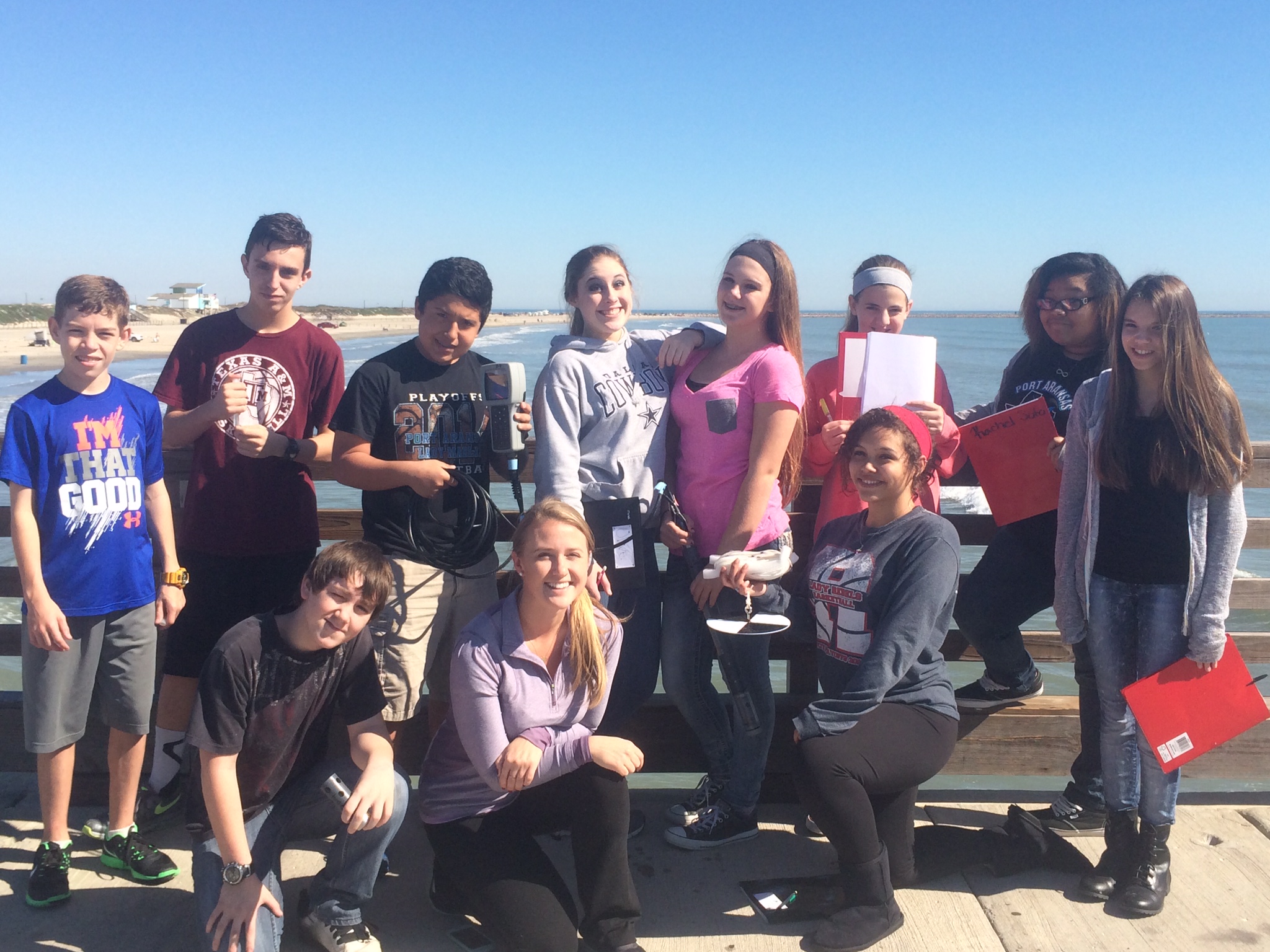
If you'd like to contact me, please email This email address is being protected from spambots. You need JavaScript enabled to view it.
Gene Oh
Resident: Fall 2013 & Spring 2014
I was chosen to do outreach to six different classes from grades 3rd - 8th. I introduced and reinforced scientific concepts through a variety of mediums such as field trips, in-class experiments, science fairs, poster presentations, and UTMSI scientist visits. The PAISD (Port Aransas Independent School District) schools have stated that since the start of this program, their students have done significantly better on their science portion of the Texas STARR test.
This experience as an educator in elementary classrooms has helped me realize that science is not something only to take place in the laboratory, but also in the classroom and to be shared with the general public. Watching the children grow and seeing how much scientific curiosity this program inspired in them was amazing. A of couple students even told me that they want to grow up to be a marine scientist. I now am driven in my scientific endeavor to educate and inspire as many people as I can along the way.


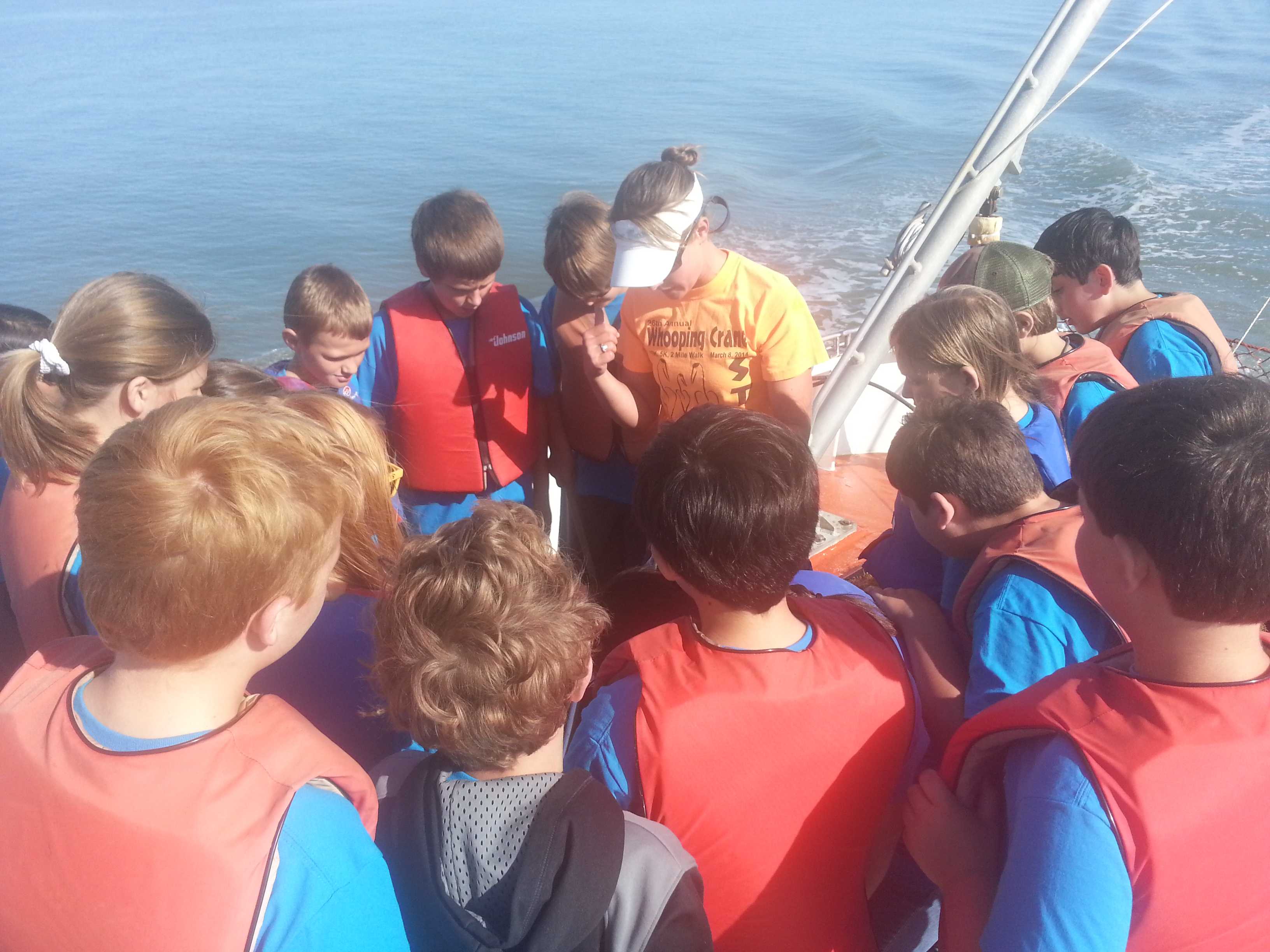

Catalina Cuellar Gempeler
Resident: Spring 2013
I was lucky to have started my fellowship at a turning point in the program. This allowed us some freedom in designing a new program for the 2012-2013 school year. I worked with 8th and 9th-grade teachers to implement a year-round research monitoring program where the students would learn to work outdoors in collecting and interpreting data about the Port Aransas environment and ecology. Students designed research questions and worked outside every week, collecting data on water and sediment chemistry, creatures in the sediments, water and sky, vegetation, and weather. Their results and analysis were presented during a student led seminar at the Marine Science Institute.
The most challenging aspect of this experience was to keep the feeling of continuity in the student’s activities during a yearlong project. I had to use a variety of teaching tools to relate every week’s work to their science classes and to their independent project. I took is as an opportunity to try new games and discussion topics that aimed at encouraging participation and integration of ideas. Yet, most of all, I enjoy sharing my love of the outdoors and seeing the students enthusiasm towards nature.
Stephanie Smith
Resident: Spring 2014
Throughout the spring semester, I assisted 3rd-grade students and teachers with classroom exercises, experiments, and field trips. The in-class exercises were used to teach the fundamentals of the scientific method by posing questions and making hypotheses. Students made observations and recorded data to make conclusions. The science themes included: earth and geosciences, chemical states of matter, plant biology, and animal ecology. Many of the field trips focused on exploring natural habitats along the Texas coast such as salt marshes, beaches, oyster reefs, and sand dunes. The students loved having the “resident scientists” visit their classrooms and many of them expressed their enthusiasm for wanting to “become a scientist someday”. This program was a great experience not only for school children who could learn from and interact with real scientists but also for graduate students who enhance their teaching and scientific communication skills. Personally, this experience has renewed my love of teaching and I hope to continue my involvement with science education for students of all ages.
